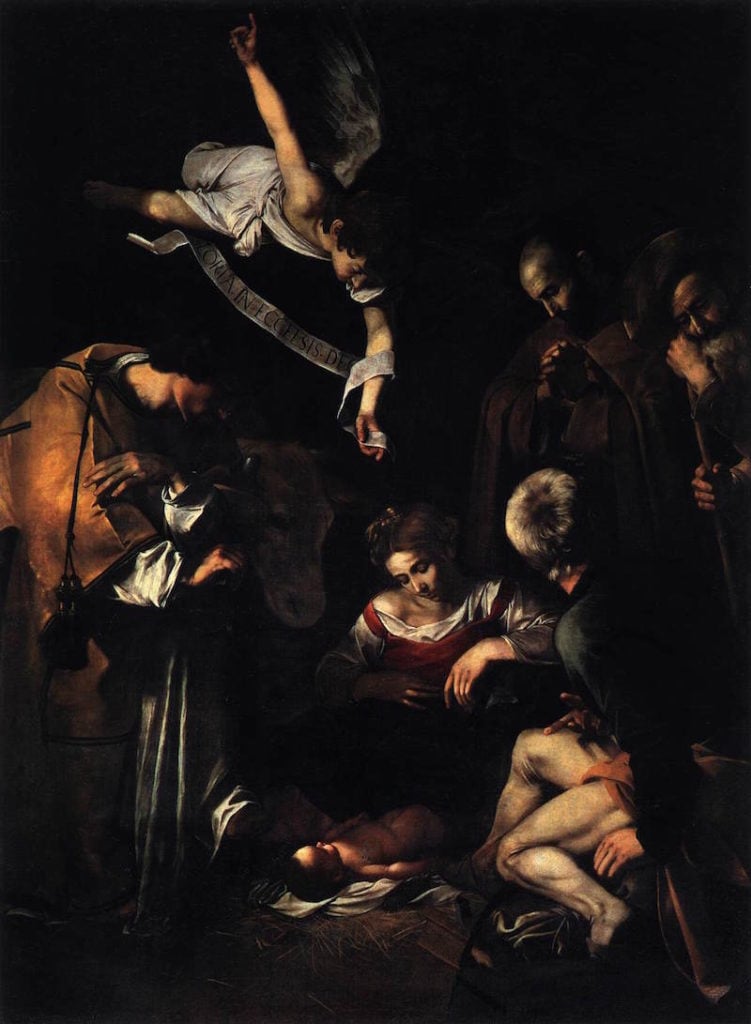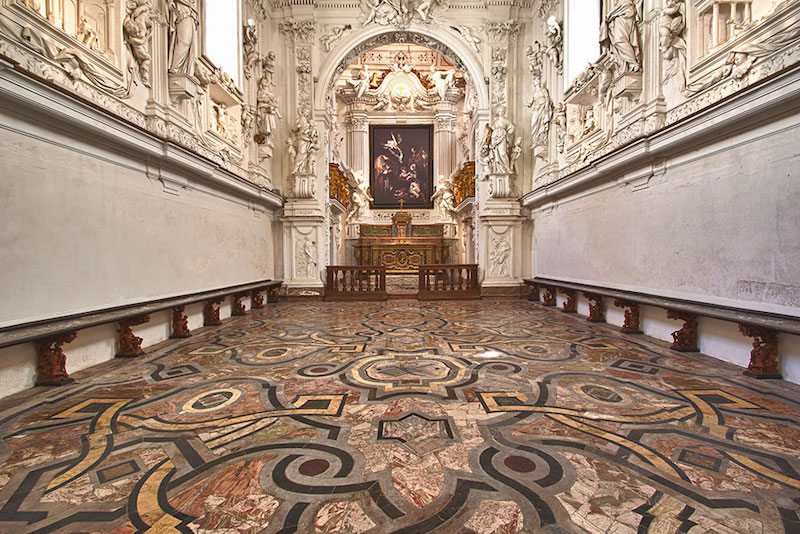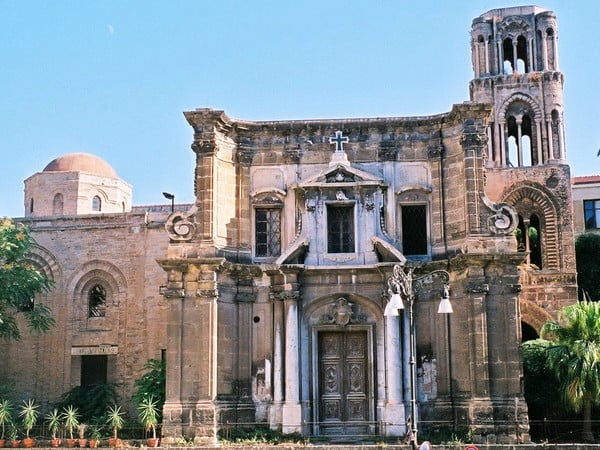Archaeology & History
The Hunt: Is Caravaggio’s $20 Million Nativity Scene Lost to the Underworld?
The theft of Caravaggio’s nativity scene is one of art history’s most significant crimes.

The theft of Caravaggio’s nativity scene is one of art history’s most significant crimes.

Verity Babbs

In one of the most significant art crimes of all time, Caravaggio’s Nativity with St. Francis and St. Lawrence (1609) was stolen from its home at the Oratory of Saint Lawrence in Palermo some 360 years after its completion. It is still missing, and the heist was listed by the Federal Bureau of Investigation in its Top Ten Art Crimes in 2005. The FBI, International Criminal Police Organization (Interpol), and the Italian police have all been working on the case for more than five decades.
The painting was made in the year before Caravaggio’s death, in either Rome or Sicily, and was then moved to Palermo, where it was hung in the Oratory of Saint Lawrence, named for one of the two additional saints that Caravaggio added to those traditionally present at the nativity scene. Saint Lawrence was a highly venerated Roman martyr and is the patron saint of cooks, comedians, and the poor. Saint Francis was a 13th-century friar and is the patron saint of ecology and animals. The nativity scene was nearly nine feet high and, according to the FBI, has been estimated to be worth $20 million.
On the night of October 17, 1969, two thieves cut the painting from its frame and rolled it in a length of carpet also stolen from the scene.
It is believed that the painting was stolen by (or certainly intercepted and moved about by) members of the Sicilian Mafia, and Italian authorities believe that the painting is still somewhere in Sicily. One Mafia informant claimed to have seen the canvas being used as a rug by Mafia boss Salvatore Riina, and another claimed that it had been destroyed in the 1980s when it was somehow both eaten by pigs and subsequently burned while it was stored in a barn in Palermo. Another theory says that the piece was destroyed in the Irpinia earthquake of 1980.
Former Sicilian Mafia member Francesco Marino Mannoia claimed in 2005 to have been involved in the crime, saying that a buyer had commissioned the mob to steal Caravaggio’s nativity scene but then called off the deal when they saw the damage that had been done to the painting. Not all authorities believe Mannoia’s claim, and some think instead that the painting was stolen by amateurs after its value was mentioned on a television program just a few weeks before.

A photograph of the painting hanging in the Oratory of Saint Lawrence. Photo: ilgeniodipalermo.com
Mob bosses who may have been responsible for transporting the painting include Rosario Riccobono and Gerlando Alberti. Alberti attempted to sell the painting in 1981 but was arrested before the transaction could be completed. After his arrest, Alberti’s nephew showed the authorities the location where Alberti had supposedly buried the painting, but no artwork was found. Another informant, Gaetano Grado, said in 2018 that the painting was stolen by amateurs and given to Gaetano Badalamenti, the head of the Sicilian Mafia Commission, who then sold it to a Swiss dealer.
In 2015, the British broadcaster and telecommunications company Sky commissioned a replica to hang in the place of the painting in the Oratory, which was at the time occupied by a photograph. The replica was made by the Spanish company Factum Arte, which specializes in producing high-quality replicas. At the same time, Sky produced the documentary Mystery of the Lost Caravaggio, documenting the creation of the copy.

Oratorio di San Lorenzo in Palermo, Sicily. Photo: arte.it
In 2023 came the podcast The Professor: The Hunt for the Mafia’s Missing Masterpiece, which follows Anglo-Hungarian art dealer William Veres, who is facing prison time for allegedly running an art-looting ring, and self-described art detective Arthur Brand as they research the case, interviewing witnesses and potential leads.
One thing is for certain: interest in this almost seven-decade-old crime doesn’t seem likely to die down anytime soon.
The Hunt explores art and ancient relics that are—alas!—lost to time. From the Ark of the Covenant to Cleopatra’s tomb, these legendary treasures have long captured the imaginations of historians and archaeologists, even if they remain buried under layers of sand, stone, and history.